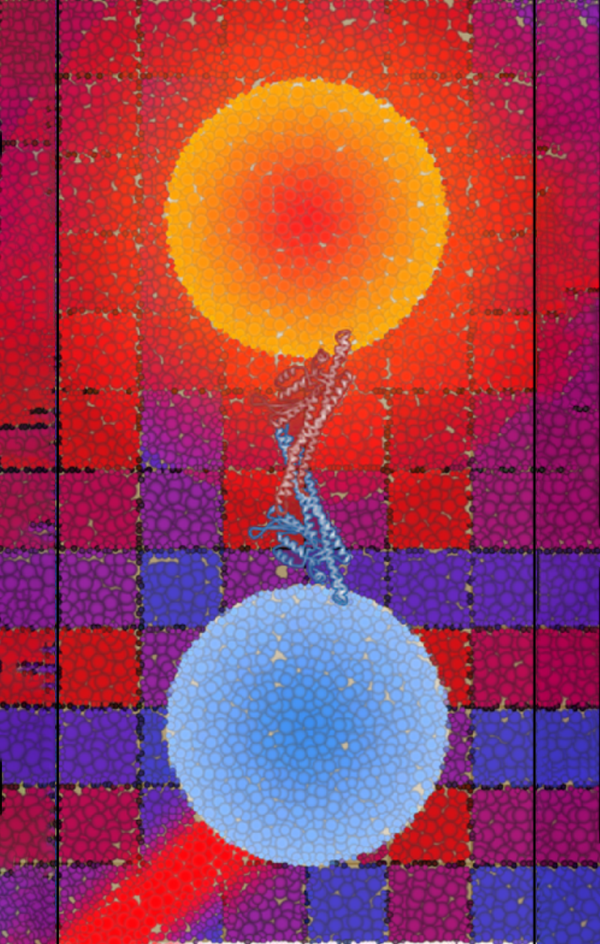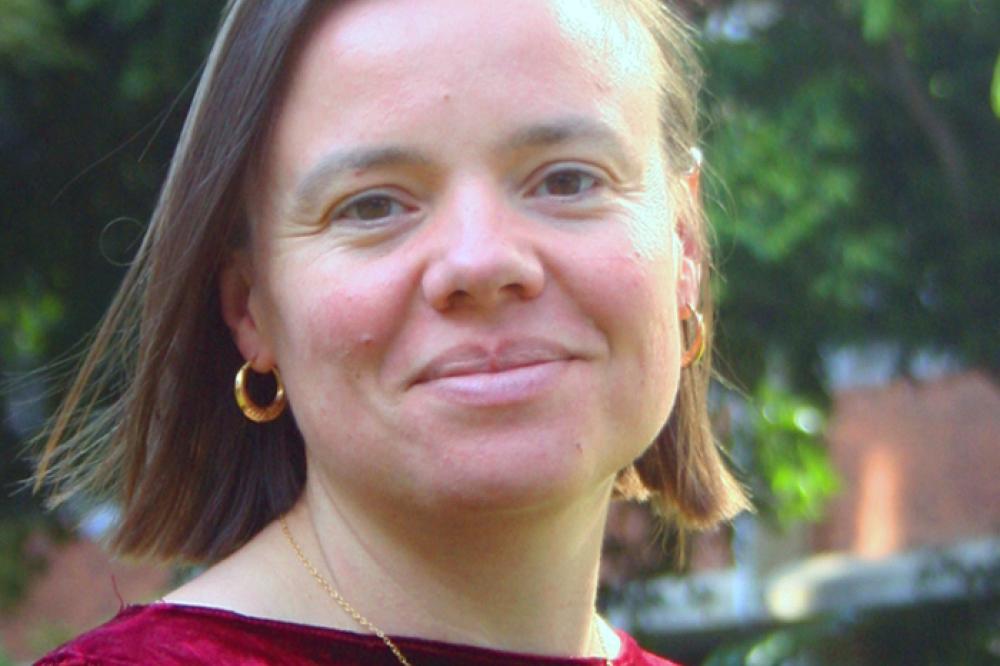Emma Sierecki–together with Yann Gambin–is mapping protein interactions to solve mysteries that have so far eluded researchers. Their strategy–combining cell-free protein expression with AlphaScreen and single molecule fluorescence spectroscopy–allows them to rapidly screen a huge number of protein binding partners.
“So much of the bigger picture has been previously missed. Protein networks play a major role in gene regulation and immunity,” says Emma.
By figuring out which proteins bind together, they have identified how 25 subunits come together to form the Mediator–the biggest adapter protein complex that regulates gene transcription.
How do cells react to their environment? A cell constantly receives internal and external signals that can be contradictory. One way to integrate this information is the formation of physical protein complexes. Formation of protein complexes allows a finite number of signaling proteins to create an almost infinite number of combinations and to fine-tune the signaling output. Mapping the hierarchical assembly of these complexes is essential to understand their function.
We are particularly interested in protein complex formation in gene regulation and innate immunity.
Gene expression is an exquisitely regulated process. Production of mRNA, mediated by RNA Polymerase II (polII) in association with general transcription factors is one checkpoint in gene regulation. Specific transcription factors binding DNA upstream or downstream of the gene of interest act as activators or repressors of the transcription. Large “adaptor” protein complexes, such as Mediator, are instrumental in integrating signals from transcription factors and nuclear complexes.
The Mediator complex is a master regulator of eukaryotic transcription. Composed of 25 subunits for a total molecular weight of 1.2 MDa, Mediator is one of the largest and most difficult to study protein machines. Using single molecule techniques we are systematically analysing protein-protein and protein-DNA interactions to reveal the organisation of human Mediator. We are also identifying transcription factor binding sites.
We aim to examine in more detail the tripartite interaction between Mediator, transcription factors and DNA. In particular, we want to study how the interaction network is affected by binding to DNA or to a specific transcription factor in order to predict the potential changes in structure of this complex.
During embryogenesis, expression of a specific transcription factors is necessary but not sufficient for cell differentiation; only combinations of transcription factors working in synchronisation lead to the appropriate cell fate.
In light of this, we aim to define the molecular mode of action of SOX18, a transcription factor that governs the specification of lymphatic endothelial cell fate and plays a role in tumour-induced lymphangiogenesis. Specifically, we want to understand how its activity is modulated by specific interacting partners.
A list of protein partners of SOX18 have been identified by RHIME, ChiP-MS and GST pull-down. Using an in vitro protein-protein interaction assay, the interactions between ALL protein pairs are examined to create a comprehensive interactome, including the indirect interactors. We are also interested in understanding how naturally occurring mutations linked to diseases affect the ability of SOX18 to recruit specific protein partners.
Finally, the interaction network can be used as a new tool for drug discovery. We can discriminate between molecules that disrupt the whole network, partially affect it or selectively break a specific interaction.
Innate immunity is the first barrier against danger. Immune cells detect and react to dangers that can take multiple forms, signalling has to be fast and elicit the appropriate response. Cross-talk between the different detection pathways is therefore essential. We would like to map the different combinations of receptors/ adaptors/ effectors that are available to get a better understanding of the signalling processes. This would yield a list of biophysically validated interactors. More interestingly, acquisition of data in a matrix approach for all pairs of proteins involved in a specific signalling pathway will provide insight into the network at play and allow identification of effectors that are not actual binders.

